Replacing a roof – everything you need to know
Replacing a roof might sound intimidating, but our easy-to-understand expert guide will help you get it right
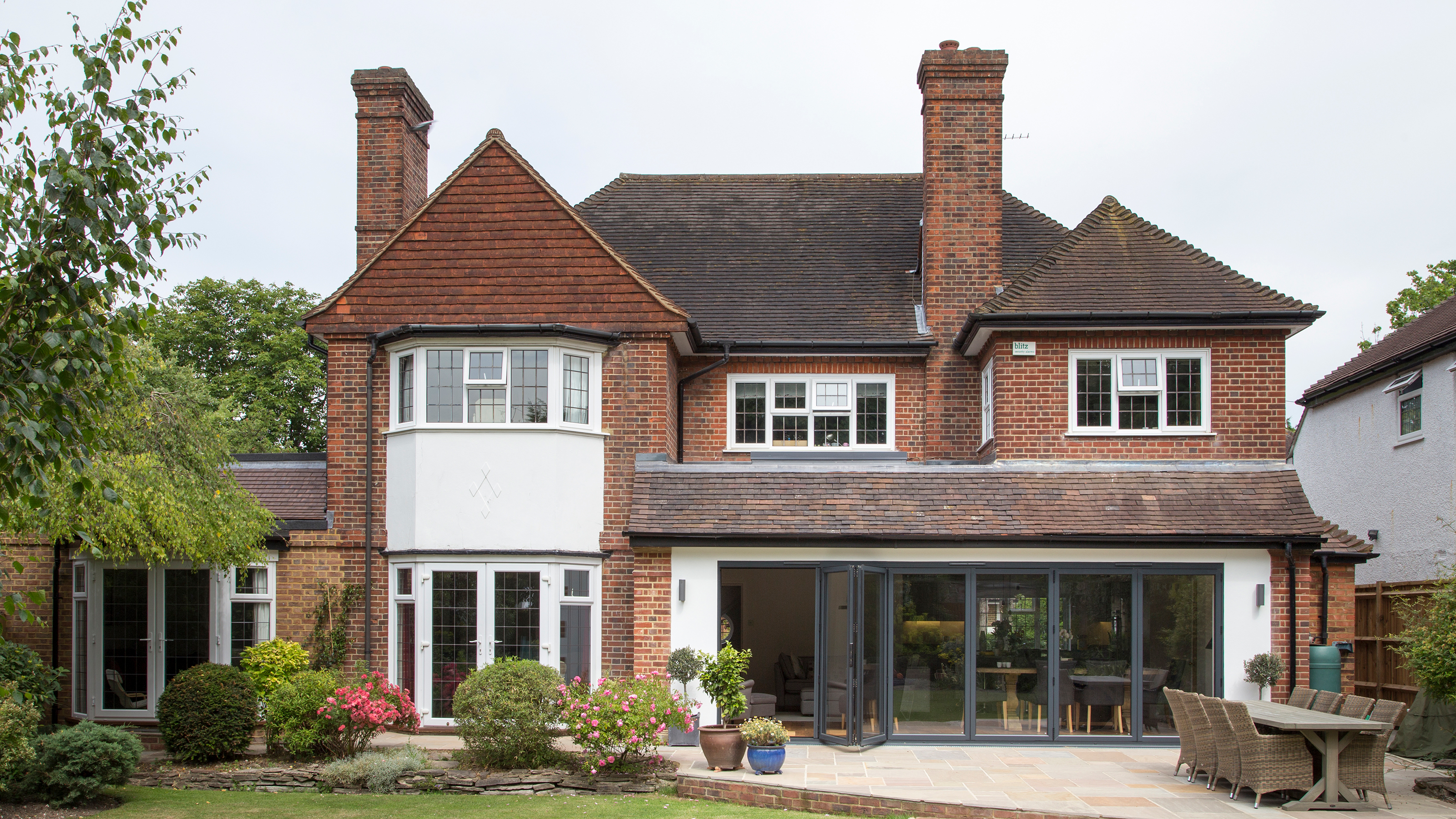

EDITOR’S NOTE: An earlier version of this article included a quote from a purported expert whose credentials we have not been able to verify. The quote has been removed. We regret this lapse in our verification process and have updated our internal protocols to reduce the risk of recurrence.
Roofs are unsung heroes of our homes. They shelter us from the elements brilliantly, yet we take them for granted, only thinking about them when a leak springs from the ceiling. But a stitch in time really does save nine, so it’s important to check your roof regularly, maintain it well and know when replacing a roof is needed.
'The roof is one of the most important parts of your house,' says Lisa Grosse, brand manager at fibre cement tile maker Cedral. 'It offers protection from the elements and keeps your home cool in summer and warm in winter. That’s why it deserves good care and maintenance, before there’s a major problem, to limit disruption and expense.'
Inspect your roof regularly so you are able to get away with a few more affordable repairs. When a roof replacement is required, it’s a big job best planned in advance so you don't want to be suddenly caught out.
When to replace a roof – signs it’s time for a new one
Knowing how long a roof should last, and how often it needs replacing is key when you're a homeowner. But its also crucial you know the signs of wear and tear to look out for, regardless of the type of roof you have.
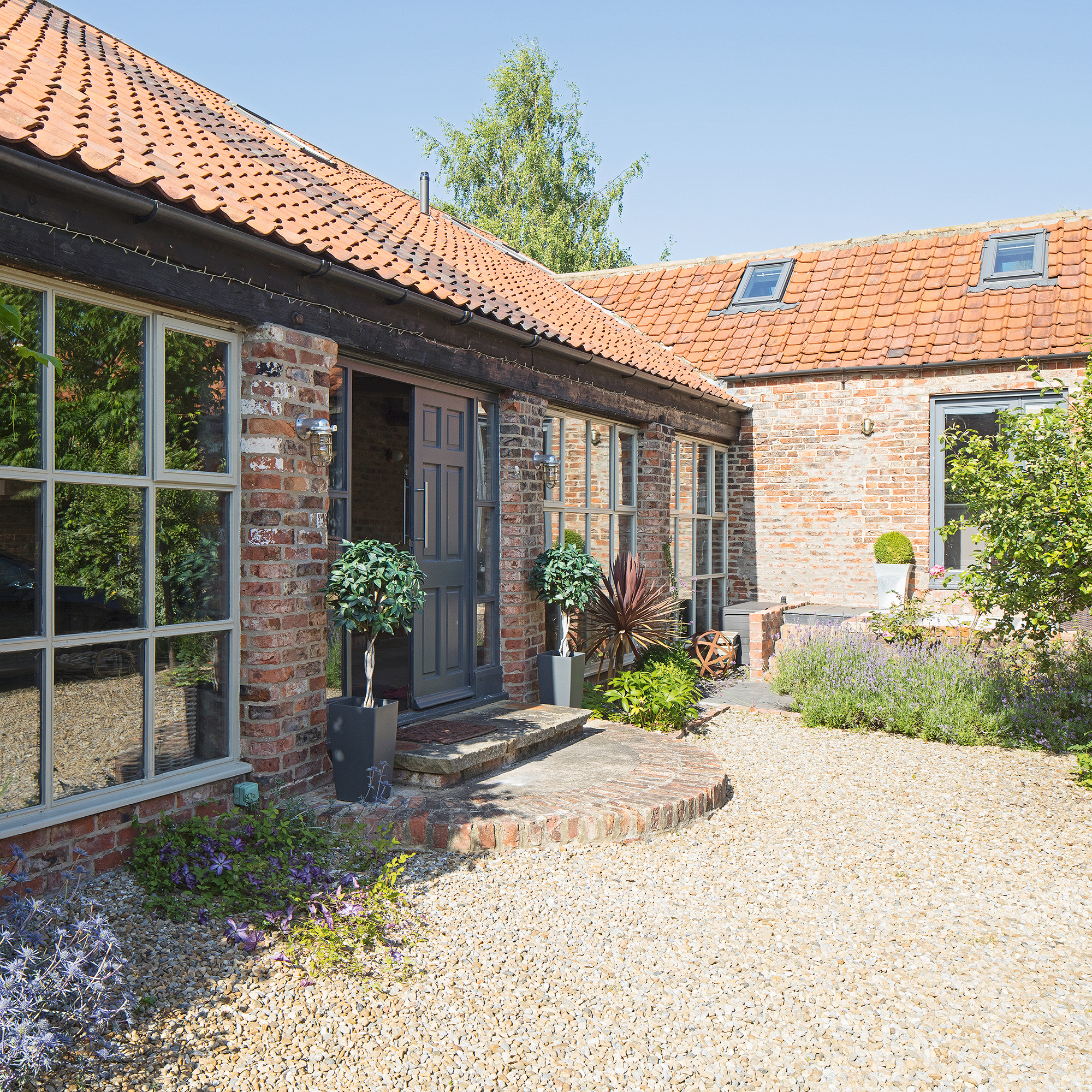
Inspect from inside
Inside your home, look out for leaks and more. 'Water dripping into your house from the roof is never a good sign and potentially flags up missing slates or tiles, blocked gutters and long-term damage,' says Lisa Grosse at Cedral.
Inside, other signs that you have roof or guttering problems include peeling paint and water damage high up. Low down, they’re more likely to be leaks or damp.
Inspect in the loft
If you’re in an unconverted loft and can see a chink of daylight, you have a problem. Unless it’s a tiny one, low down, where there should be a ventilation gap under the eaves, between the roof and the wall. A chink of light means you have a hole in the roof where a slate or tile has slipped. Water can get in, so you need a bucket… and you need to call a roofer. You should also inspect timber for signs of mould, damp, moisture and rot.
Sign up to our newsletter for style inspiration, real homes, project and garden advice and shopping know-how
If you have a loft conversion, look out for leaks after heavy rain. And while you won’t be able to see the inside of the roof, you may have Velux-style windows. Open the window and poke your head out for a close-up inspection of the roof. Are any tiles or slates missing or broken? Are gutters blocked?
Inspect from outside
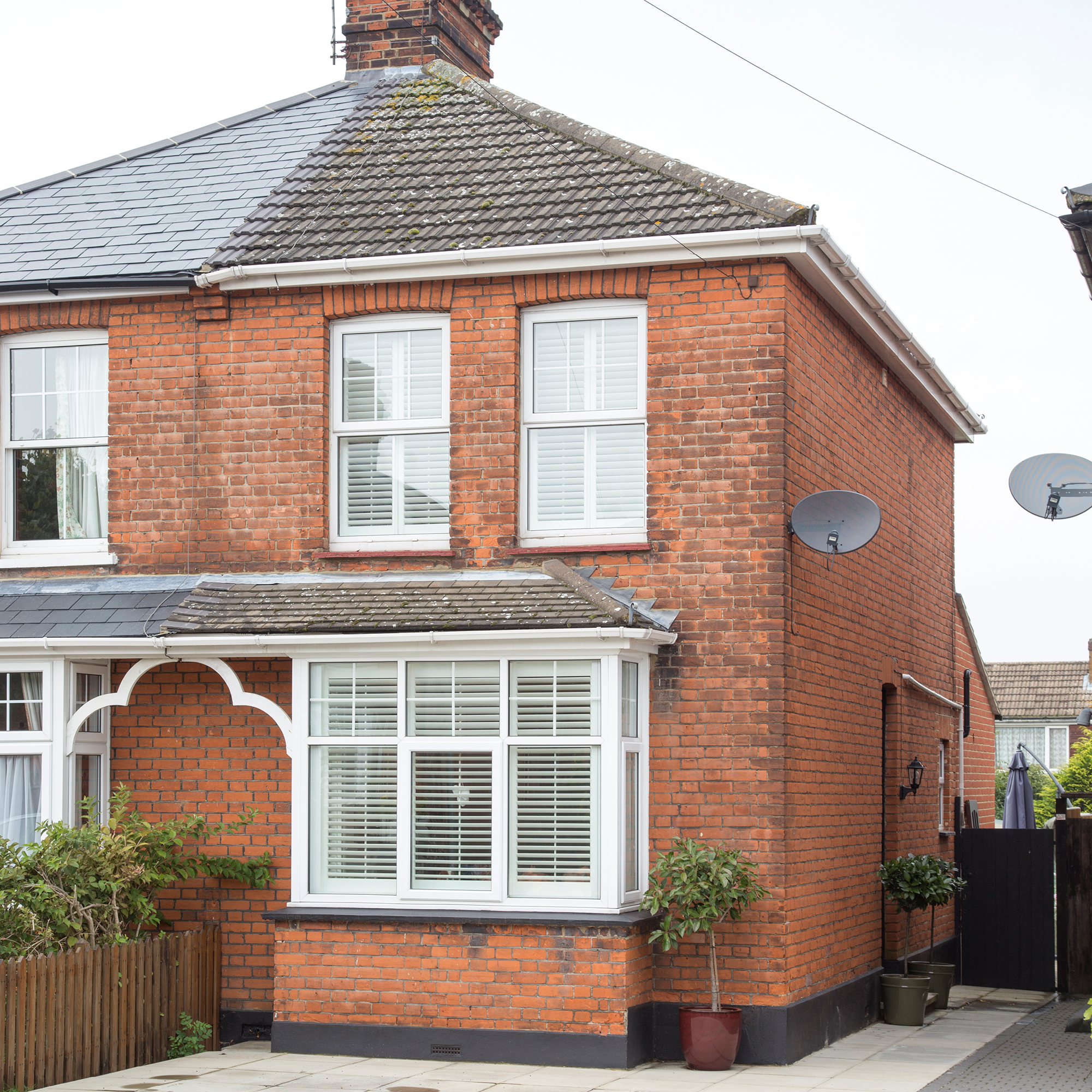
Cross the street and look back at your roof. Do the same from the bottom of the garden. Hopefully, you’ll get a good vantage point, to see whether any slates or tiles are missing.
'Walk around your house and check for piles of leaves, debris and any build up – a good tip is to use binoculars – as these trap moisture from rain and can cause damp,' says Sunny Lotay, national commercial manager at PermaRoof.
The view from outside should also help you see the shape of the roof. Is the roofline sagging?
'If the roof is visibly sagging, it may need extra supporting rafters or struts, or it could be a sign that the roof is too heavy, in which case it will need to be replaced with a lighter material,' says Lisa Grosse at Cedral.
Inspect every element
A roof isn’t just the slates, tiles or alternatives. It’s also the timber that supports them, the chimney and guttering. These all need inspecting and they should all be brought up to scratch when renewing a roof.
'Gutters need regular cleaning to prevent the build-up of vegetation which prevents water draining off the roof and away from the house,' says Lisa Grosse at Cedral. 'Obstructions can also build up in the valleys in your roof, causing further water damage. Finally, check the flashing around your chimney regularly as damaged flashing can be vulnerable to water penetration. Water damage builds up over time and may mean that the roof needs replacing.'
What are the benefits of replacing a roof?
'The main benefit to replacing a roof is peace of mind,' says Thomas Goodman at MyJobQuote.co.uk. 'Once it’s done, there’s less maintenance to do and less to worry about when bad weather hits.'
It's mostly peace of mind and limits how much maintenance you'll need to do, but a roof renewal is also a great time to top up loft insulation. Good insulation pays for itself fast.
'Faulty or poorly insulated roofs typically account for a quarter of heat loss in the home,' says Sunny Lotay at PermaRoof. 'This can be costly, especially as energy prices are at an all-time high.'
Roof materials
If you need to replacing your roof, you'll need to understand the different types of roof tiles and coverings available to you.
Slates
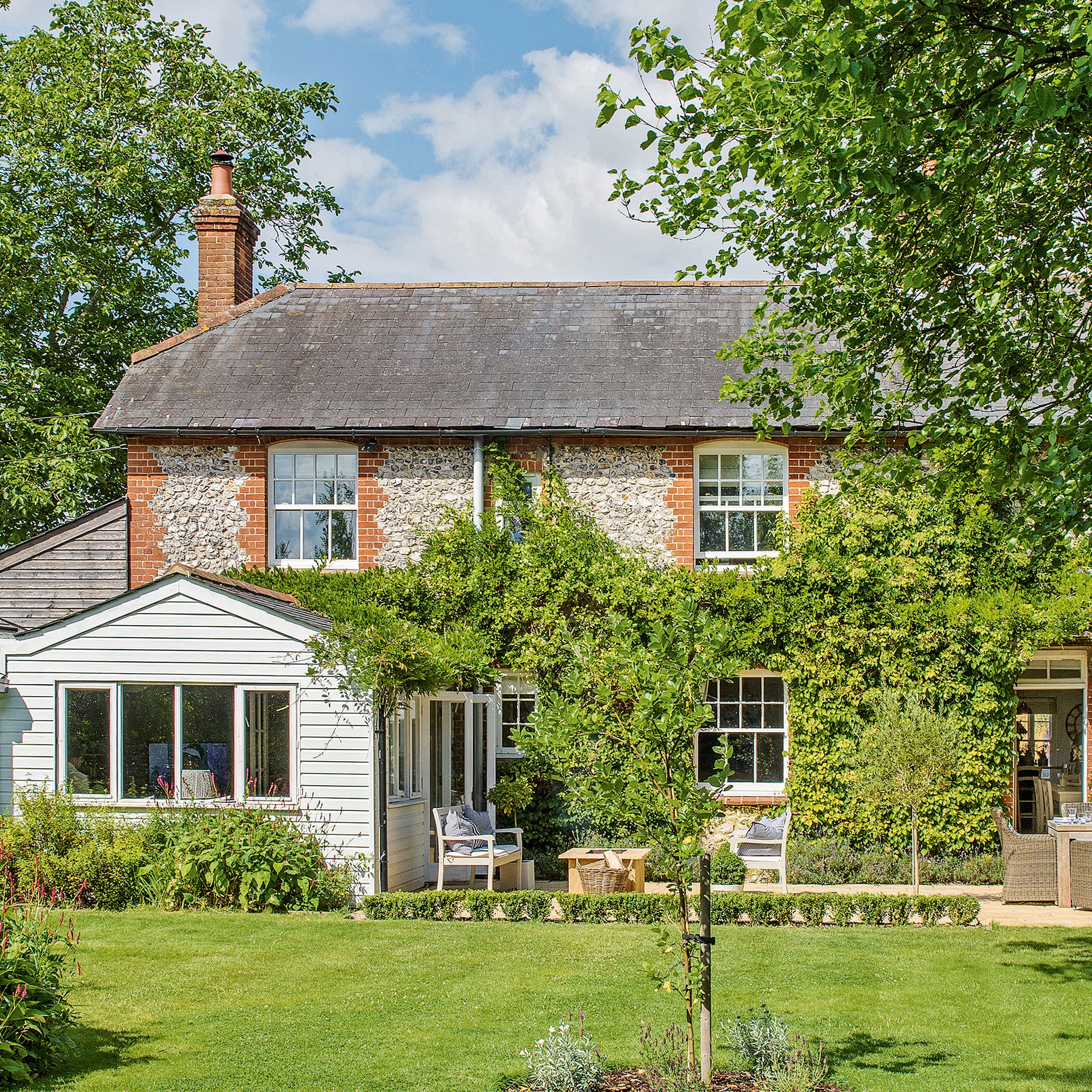
Slate is a traditional roofing material so it looks authentic and is long-lasting. But it’s expensive as there are only a few slate mines left in the UK. Slates have the advantage of being lighter than tiles, so need less structural support.
If you like the look of slates, it’s worth considering fibre cement slates (see below) too.
Tiles
Concrete tiles are the most popular man-made option. They’re affordable and easy to lay but heavy – so check that your roof structure can support them if you’re not replacing like with like. They’re low-maintenance and fire-resistant too. But concrete is naturally porous, so unless they have a protective coating, moss and lichen can be a problem and the tiles can be frost-damaged. But a protective coating drives up the price.
Terracotta tiles are attractive, with a traditional look. They’re also very durable and the natural colour doesn’t fade. But again terracotta tiles are heavy.
Fibre cement slates
Fibre cement slates are cheaper than natural slates but offer a traditional slate look. They’re long-lasting and lighter, so make a good slate replacement because you don’t need a stronger roof structure. They can also come in a range of shades.
The Cedral range includes a number of options, from the premium Rivendale with dressed edges to the traditional-looking, more affordable Birkdale.
Other materials – thatch, metal, glass, green

Thatching is a dying art, so to replace a thatched roof you’ll need to find a skilled craftsperson. The good news is, treated well, a thatched roof can last up to 40 years. You’ll need fire protection, and ensure that you are covered by thatched roof insurance.
Metal roof coverings are growing in popularity because they give buildings a modern, eye-catching style and provide a good level of durability, but some are incredibly expensive to use and although they’re quick to install, you’ll need a roofer that knows what they’re doing. Metals such as copper, aluminium and zinc can dent and be noisy, so make sure to explore your options thoroughly.
Glass roofs are pricey thanks to the manufacturing and transportation costs of the large panels. They’re attractive and bring plenty of natural light, but best reserved for conservatories and extensions. Even with specialist glass, you can find yourself with too much light and too much heat on a summer’s day. It’s usually wiser to go for small sections of glass roof or roof windows.
Green roofs are fashionable and sustainable but you need extra support for their added weight. Their biodiversity is especially valuable in urban areas and they help insulate your home. As well as structural support, think about the practicalities in advance: will the planting need maintenance and can you safely access it? For this reason, a green roof suits accessible flat roofs low down, not pitched roofs high up.
With any non-standard roof material – that’s anything except slates or tiles – double-check that your home insurance policy covers it.
Flat roof materials
Felt flat roofs have a lifespan of 10-20 years, though they can last longer. Unlike the simple felt on a shed roof, flat roofs on houses use “torch on felt”, three layers welded together with a blowtorch.
A longer-lasting alternative ideal for the flat roof of a house, where repairs require scaffolding, is EPDM. This rubber roof membrane is great for longevity and performance. For example, PermaRoofEPDM has an expected lifespan of more than 50 years.
Whatever the material, if a substantial amount of your roof is flat, check that you have flat roof insurance to cover it.
How long does it take to replace a roof?
A good roofing company can replace a roof in just one to two weeks depending on the size of your house, weather conditions and how many people are working on it.
How to replace a roof - what to expect
While the process of replacing a roof might seem pretty straightforward, it does depend on the type of property you live in. After all, the process of replacing the roof of a terraced house will have a different set of concerns and challenges than that of a detached house.
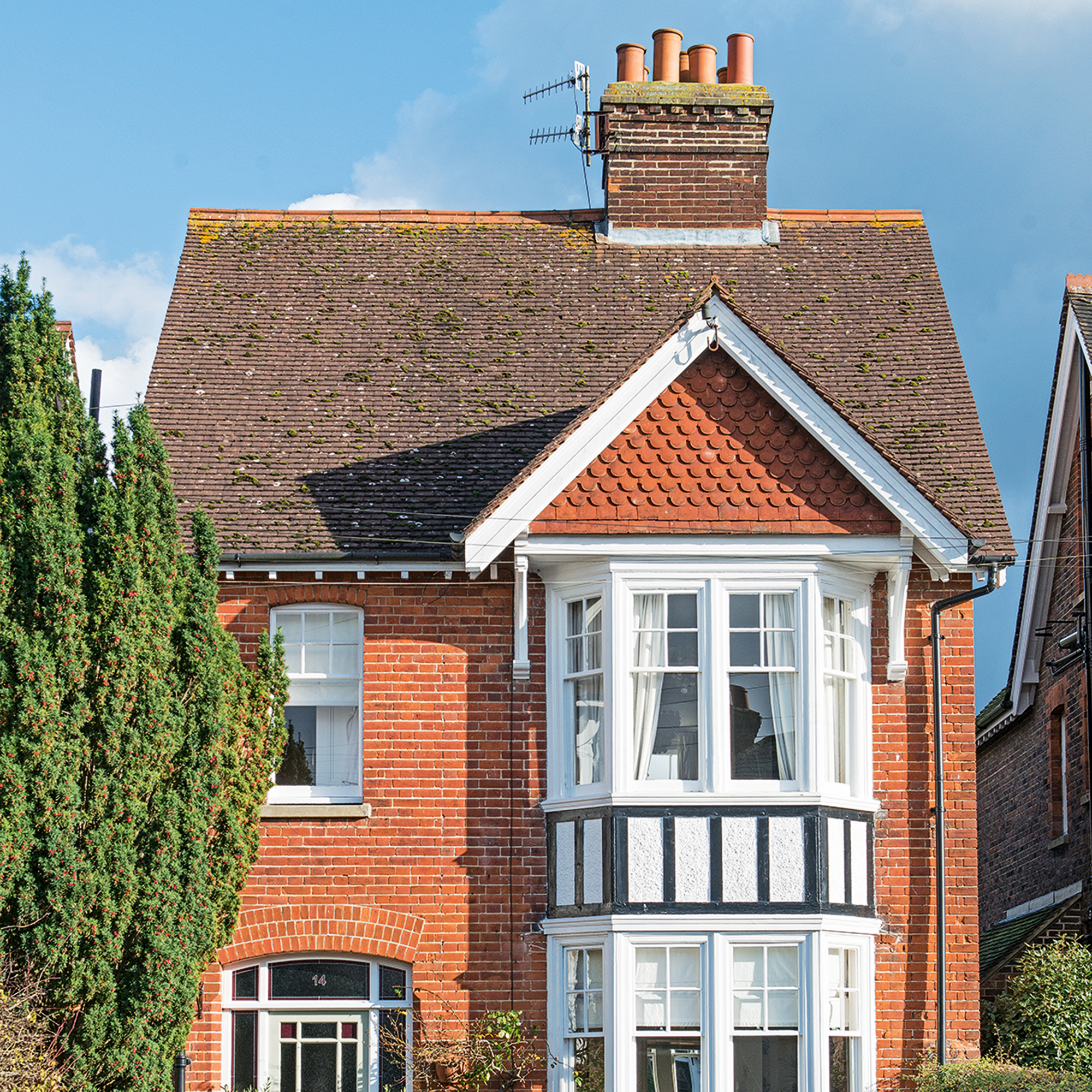
Scaffold and skip
According to Goodman, your roof will be thoroughly inspected and then the old materials will be stripped. This starts with the ridge and roof tiles, and then the battens and old felt or moisture membrane are removed. Anything reusable is carefully taken down and stacked to one side.
Structure
The supporting structure of your roof will be exposed and any broken or rotten timbers will be replaced.
Next, to comply with building regs, the roof will have thermal insulation fitted between the rafters, covered by a breathable membrane.
Slates or tiles
Your new battens are laid horizontally over the top, then slates or tiles are fitted to the battens.
Important details like guttering, vents, valleys and the lead flashing around the chimney will all get attention, to ensure the reroof is sound – keeping your home dry and your loft free of damp.
Working with solar panels
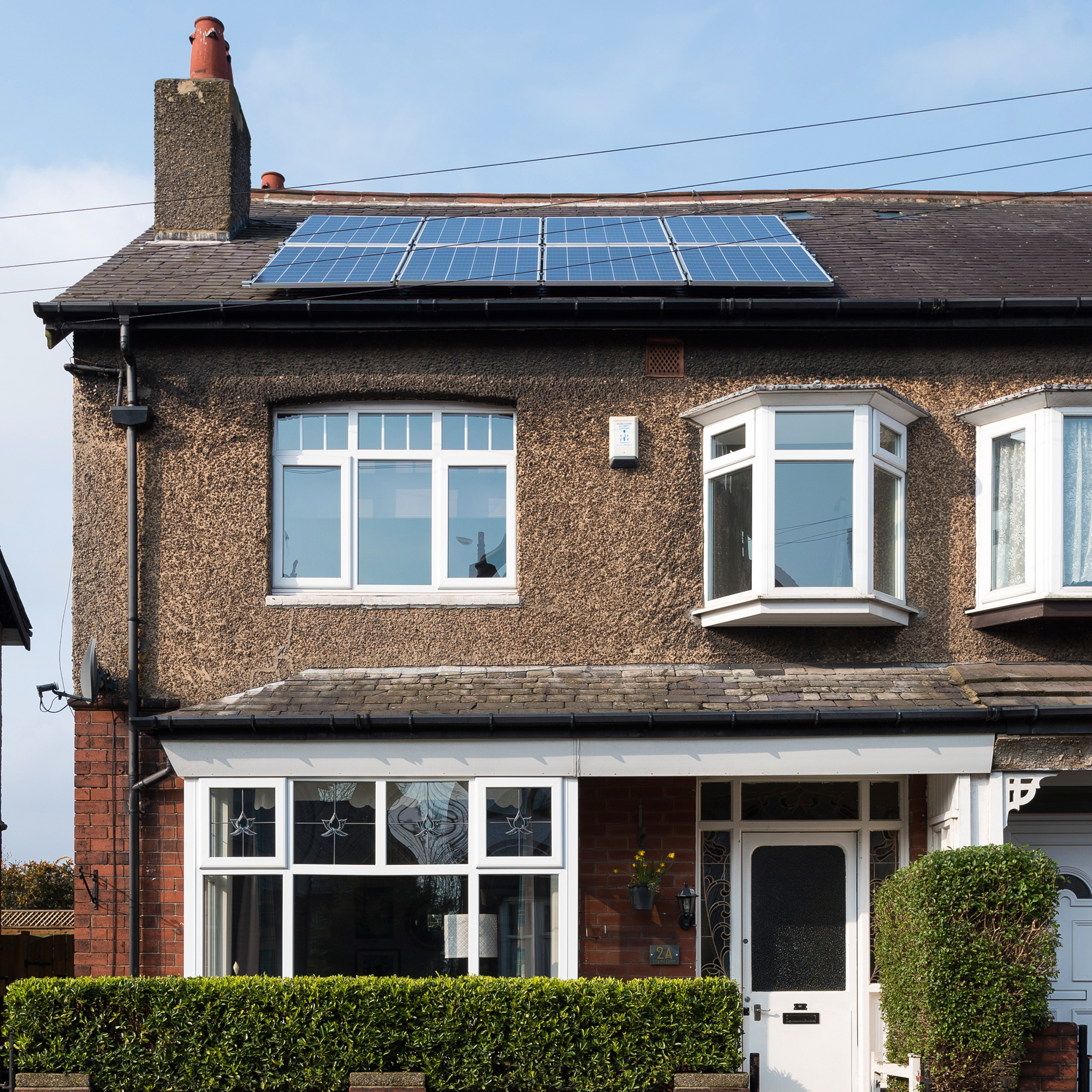
It’s easy to remove and re-install solar panels before and after the roofing works, according to a spokesperson from Checkatrade.com. But the costs will vary depending on a few factors.
Obviously, if you’re changing the number or layout of your solar panels, there will be an added cost. And changing the roof pitch or orientation will affect performance. Photo voltaic solar panels might need new inverters.
Even a simple change might have an impact. For example, is the tile type changing? If yes, the roof fixings for the panels will change, so that’s an added cost.
Checkatrade.com recommends speaking to your original solar panel installer at the same time as your roofer, so that the works are carried out in the right order and so that your warranty isn’t voided.
Do I need planning permission for replacing a roof?
A new roof falls under permitted development rights, so you don’t need planning permission unless you live in a conservation area or your home is a listed building, but this may not apply with major changes or if you're planning on adding solar panels.
There are stricter planning rules if you live in a conservation area or your home is a listed building. You can check this with your local authority.
How much does roof replacement cost and is it worth it?

Roof replacement is a big job and a significant investment, not a DIY job. Checkatrade.com a website which helps you find a reputable local tradesperson, regularly updates its guide to roof replacement costs.
At the time of writing, the average UK cost for roof replacement was £5,500 and the range was between £3,000 and £18,000 for most roofs. A gable roof (two pitched rectangles, like a sheet of paper folded once) is cheaper to reroof than a hip roof (four triangles, like an Egyptian pyramid).
Priced per square metre of roof, it ranges from £120 to £290 – a wide range because it depends on size and complexity as well as materials.
How long will a new roof last?
A guarantee might be for ten years but your roof should in fact serve you for longer, especially if you look after it, generally about 25 years.
What is the best time of year to replace a roof?
Roof replacement is possible at any time of the year but is best planned in advance.
Spring and autumn are ideal. Roofers should ensure that you stay protected against the elements, but your home will be cold if the roof is off in the middle of winter. And mid-summer is ok for you but hard work for the roofers themselves on sunny days.
Work should be done off scaffold and ladders, without people traipsing through the house, but it still could be worth scheduling it in parallel with a holiday. Especially if you work from home – the noise is hard to escape.
How to choose a reputable roofer
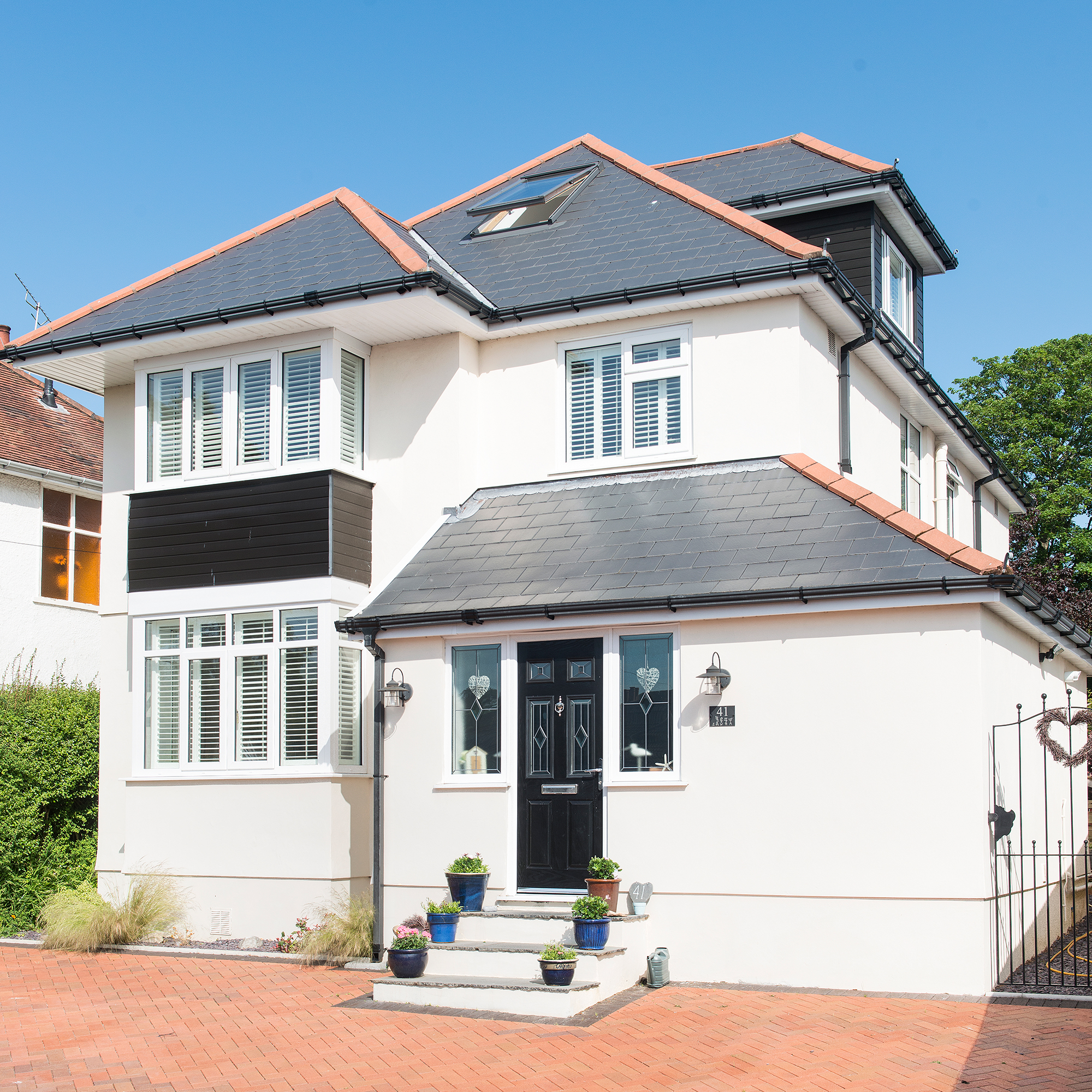
Look for local roofing companies with a good reputation. Ask friends and neighbours for recommendations or search on trade sites.
Check that they have worked with your choice of roofing materials before and check if they’re members of a trade association such as NFRC and CORC and are a registered company with a good track record.
The NFRC is the largest and roofing trade association in the UK. It produces a Homeowners’ Guide to roof work, including guidance on choosing a contractor. Homeowners can request a printed copy or read it online.
As with any trades, get quotes from three companies to compare. Ask for detailed quotes, so you know what you’re paying for, with a cost breakdown of labour and materials. And ask to see their insurance policies.
How long a warranty will your roof have and do they have Public Liability Insurance to protect them and you against accidental damage to neighbouring properties or passers-by?
Stretch goals
If you’re reroofing anyway, now is the time to think about other work high up. If you’ve been toying with the idea of a loft conversion or solar panels, you can economise by doing them at the same time.
It’s also the right time to contemplate solar panel installation costs. As energy costs rise and solar panels become more affordable, the payback time decreases. Even if you don’t want solar panels now, you can ensure that the roof structure is strong enough to support them, future-proofing your home for decades to come. There are also innovative solar panels that take the place of slates or tiles.
'Solar PV (photo voltaic) can be installed on almost any roof type. Only a few materials like thatch are not suitable. However, it is worth considering that with certain roofing materials, like slate, it’s currently cheaper to install inset solar panels than the slates,' says John Gilham, Technical Director of Green Building Renewables.
Companies such as Wales-based solar manufacturer GB Sol make roof-integrated solar panels, which save on roofing materials and reduce weight. It even makes PV Slates, which look like regular roofing slates but invisibly generate electricity. They’re ideal for discreet installations on period homes.

Caramel Quin is an award-winning journalist and professional nerd who tests technology for newspapers, magazines and online. She has written for Ideal Home since 2012. She prides herself on real-world testing and translating geek speak into plain English. Her pet hates are jargon, pointless products and over-complicated instruction manuals.